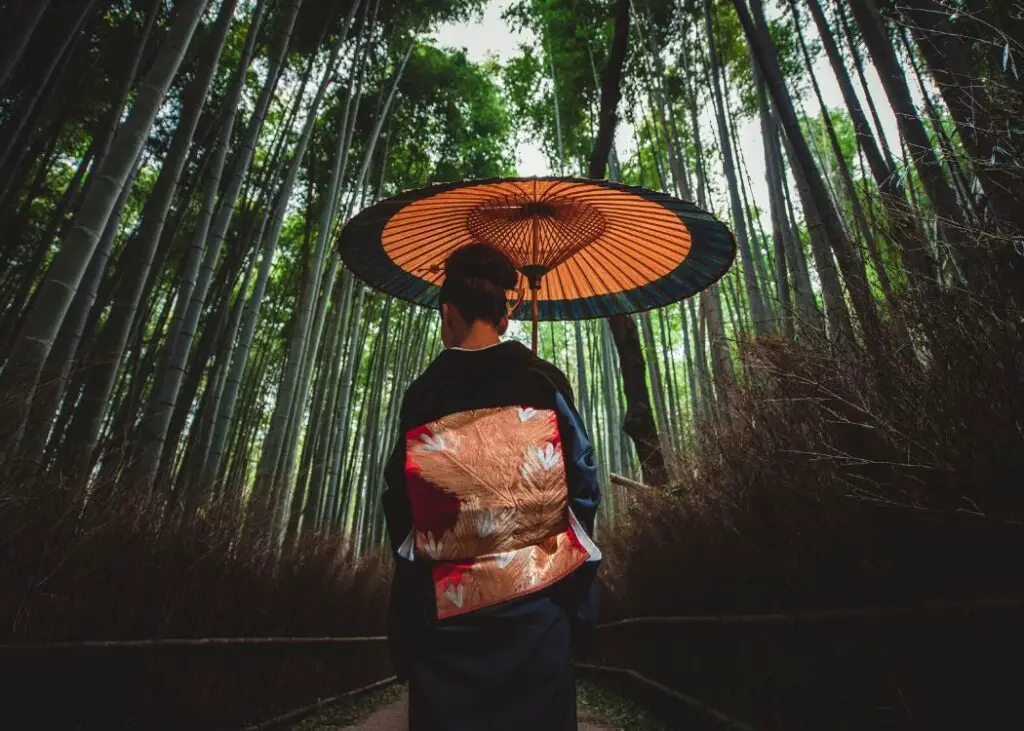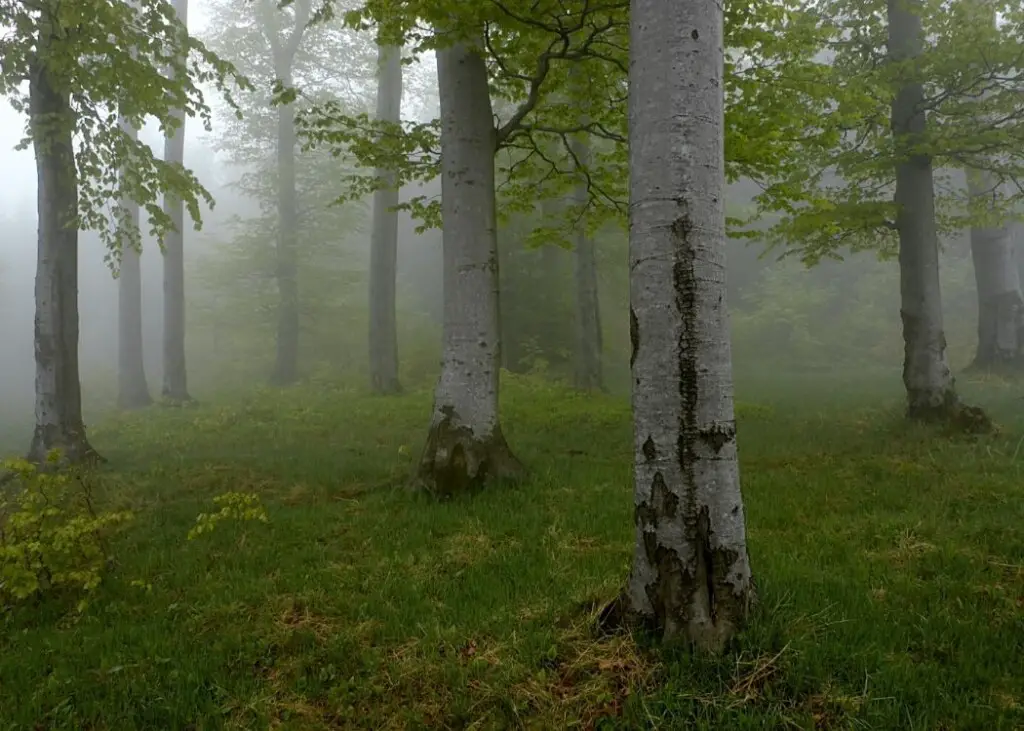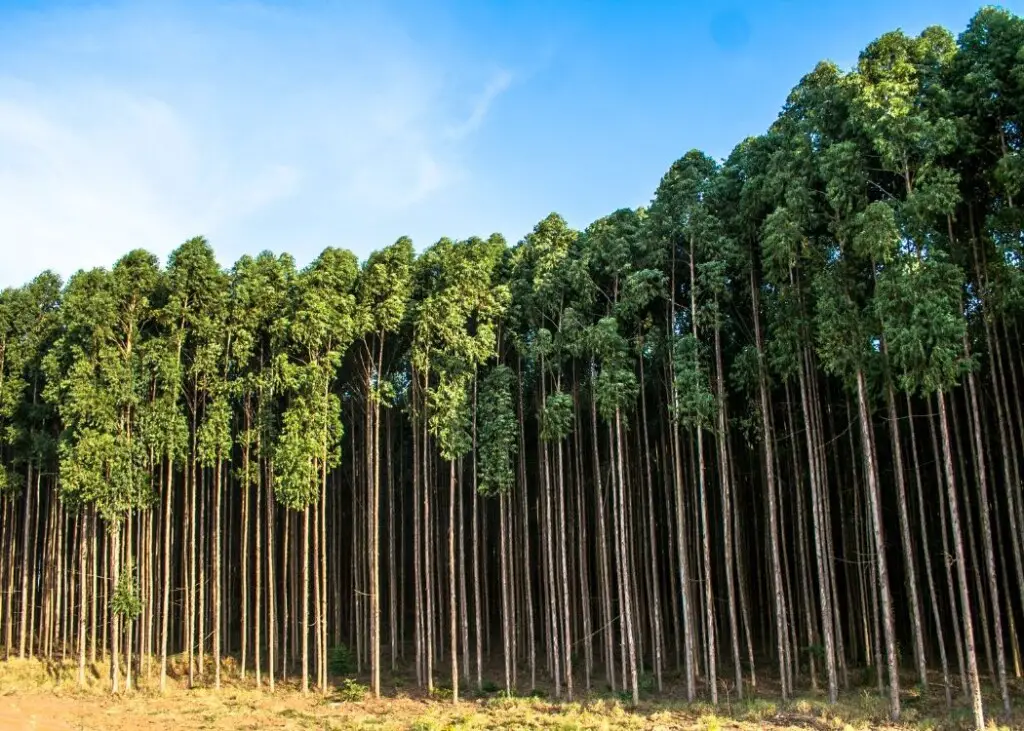Table of Contents
**This page contains affiliate links and I will be compensated if you make a purchase after clicking on my links**
I love this fabric. At present, I’m sleeping on Lyocell sheets under a weighted Lyocell blanket, with plans to purchase more Lyocell… (I’m currently on the hunt for lyocell clothing, but that is proving more elusive…)
Why do I love this fabric so much? (And why will I never sleep on cotton sheets ever again?)
Is Lyocell good for hot weather?
Over the last few years, I have become a “hot sleeper”, prone to hot flushes. I used to curl up under flannel sheets and turn my electric blanket up to ten. No more.
Instead, I now find myself waking up in the middle of the night drenched in sweat. In the winter.
We talk about how cotton is “breathable”, but it’s very bad at moisture control. Those who exercise regularly know that you never wear cotton, or you’ll find yourself wearing the equivalent of a soaked rag.
The same goes for sheets and the rest of your bedding. You sweat, and that sweat stays with you.
- Lyocell, on the other hand, pulls moisture away, keeping you dry while promoting cooling
By pulling away moisture, the heat from the surface of your skin is pulled away as well. This is a form of evaporative cooling.
Other fibers, both natural and synthetic, are good at this. Moisture-wicking fabrics include wool, linen, and silk.
Is Lyocell good for cold weather?
Lyocell isn’t just for warm weather, but anytime.
It may be more important in cold weather.
As any winter sports enthusiast knows, your first layer is critical. (Yes, I used to ski back in the day.) When you sweat, does that moisture wick away, or does it stay close to your skin? As soon as you stop moving, you’re at risk of freezing if you are the least bit damp.
Although not as extreme, the same principle applies to bedding. While we sleep our temperature needs change; as the night progresses we prefer to be cooler.
But we like to start out in a toasty warm bed. As we sleep and our core temperature drops, our three quilts and down comforter prove to be too much. We overheat and become drenched in sweat. Then we freeze.
Although not a direct threat to our health, this cycle will affect our ability to get a good night’s sleep.
Ditch the three quilts (which I bet are all made of cotton) and the down comforter, and switch to sheets, blankets, and comforters all made of a wicking fabric (and fills), such as Lyocell, linen, or wool.
- In cold weather, Lyocell keeps you dry, preventing chilling due to wetness
(For extreme temperature control, consider either an air- or water-based bed climate system.)

Is Lyocell a natural fiber?
Lyocell is called a “cellulosic fiber” because it is derived from cellulose. For those who remember their biology, cellulose is the complex carbohydrate (sugar) responsible for the stiffness in plants, keeping them upright.
Veggies and grains that we eat are rich with cellulose, which is poorly digested. Instead is passes through our digestive system, keeping things running and pushing out waste.
- Cellulosic fibers, such as Lyocell, are natural, as they are made from wood pulp, which is rich in cellulose
Viscose Rayon
The first generation of cellulosic fibers was viscose rayon. (Technically “rayon” is another name for cellulosic fibers, however, most use the term to refer specifically to viscose.)
Viscose is usually made from the wood pulp of bamboo. Therefore “bamboo rayon” is most likely viscose.
Cellulose is a tough fiber to break down—our digestive enzymes barely make a dent. Strong chemicals are required.
To make viscose, the wood pulp is treated with a strong base, followed by carbon disulfide, which forms cellulose xanthate. The xanthate is then dissolved in sodium hydroxide (another base) and extruded as long strands into a bath of sulfuric acid where it precipitates (solidifies) into cellulose filaments.
To strengthen the fibers, they are then heated at high temperatures, which oxidizes them and generates carbon dioxide and other carbon-containing gases. (Yes, the same carbon dioxide we’re all trying to reduce.)
In the early days, a lot of these chemicals ended up in wastewater. Today, less water is used, and less environmental contamination occurs, but there are understandable concerns about the process.
Viscose is very soft and shiny and was originally coined “artificial silk”. It also absorbs twice the moisture of cotton.
However, viscose is considered more delicate than cotton and must be handled with care. It becomes weak when wet. Indeed, clothing made of “rayon” is usually labeled “dry-clean only”.
Modal
The second-generation cellulosic fiber is Modal, which uses a similar manufacturing process.
This process is more eco-friendly than that of viscose but not as good as that of Lyocell.
Lenzing of Austria, the main manufacturers of Lyocell, also makes Modal. They are committed to making both products as environmentally friendly as possible.
Like the other two fabrics, Modal is made from sustainably grown wood pulp, usually Beechwood.
Lenzing has modified the original viscose process to recover most of the used chemicals. In addition, they collect one of the products, sodium sulfate, which can be used to make detergent and glass.
Unlike viscose, Modal is a strong fiber, even when wet. At the same time, it feels soft. Because of these properties, it’s used commonly in bedding, underwear, pajamas, and other loungewear.

Is Lyocell eco-friendly?
The third-generation cellulosic fiber is Lyocell. Lyocell is also sold under the brand name Tencel™. Lyocell was originally manufactured by Courtaulds in the UK. They scaled up production, and opened a factory in Alabama, and started using the Tencel™ brand.
Since then, Tencel™ has changed hands and is now owned by Lenzing, based in Austria, who independently started making their own Lyocell. At present, they are the largest manufacturer of Lyocell.
Buyer beware, many other manufacturers of Lyocell, borrow the Tencel™ brand name, however, only Lenzing is legally allowed to use it. In other words, your “Tencel” sheets may or may not have been made from Lyocell from Austria.
“Lyocell” is the generic name and is manufactured by many different companies. These companies may or may not follow the same sustainability standards as Lenzing.
Indeed, Lenzing has earned numerous sustainability certificates from the US and the EU.
- First, wood is sustainably sourced
Although Lenzing doesn’t specify what type of wood they use, other Lyocell manufacturers may use either Bamboo or Eucalyptus. Trees, such as Eucalyptus, Beechwood, and Bamboo all grow quickly with minimal water and fertilizer.
- Second, any leftover wood pulp is biodegradable and compostable
- Third, the Lyocell manufacturing process uses a “closed-loop process” where most of the solvents and water are reused
This makes Lyocell one of the more environmentally friendly fabrics out there.
The process of making Lyocell is like that of viscose, with some key differences. Wood pulp is dissolved in an amine oxide (NMMO) and heated to help the breakdown process. The solution is then extruded into a solution of amine oxide where it precipitates into fibers. These fibers are further washed and dried so no NMMO remains.
The amine oxide used to make lyocell is N-methylmorpholine N-oxide (NMMO). Interestingly, this molecule behaves differently based on how much water it’s dissolved in. With little water, the concentrated NMMO dissolves cellulose, but once more water is added, the diluted NMMO precipitates out the fiber after it’s extruded.
Excess water is removed from the amine oxide solution, and it is reused for the next batch.
Little if any amine oxide is released into the environment (less than 1%). Fortunately, amine oxides are generally considered innocuous. They are readily broken down and excreted if ingested, and based on environmental studies of fish, don’t accumulate in tissue. Also, there’s no evidence they cause cancer or other health issues.
In other words, I wouldn’t call them “safe” (absolutely nothing in the environment is “safe”) but there is little evidence that they do harm.
Amine oxides are surfactants that are also good at dissolving dirt and grease. They are found commonly in cleaning products.

Is Lyocell durable?
Cellulosic fibers have come a long way since viscose.
Both Modal and Lyocell fibers are strong under both dry and wet conditions. They can withstand the harsh conditions of your washer and dryer. Of all the cellulosic fibers, only Lyocell has a “wet tensile strength” exceeding that of cotton.
Both Modal and Lyocell are also resistant to shrinkage.
I’m notoriously hard on my laundry: washing everything in scalding hot water, followed by significant time in the dryer. Granted, I haven’t had them very long, but my Lyocell sheets look as new as the day I purchased them.
Does Lyocell wrinkle?
One downside, cellulosic fibers do wrinkle a bit. However, not as much as either cotton or linen.
Follow the same advice as for “wash and wear” polyester blends. Untangle sheets before putting them in the dryer, then quickly remove items once the dryer is done. While the laundry is still warm, make your bed or fold the sheets for storage.
If pulling out folded sheets from storage, run them on a fast, low setting in the dryer before making your bed.
For efficiency, I wash bed sheets along with all my other clothes in the same load. (I’m sure the internet laundry experts consider this a major faux pas.)
In the dryer, the bedsheets tangle and form giant balls filled will wet clothes. Only the outside of the “ball” dries. I will then need to untangle the mess and rerun the dry cycle.
Despite all this abuse, my Lyocell sheets are holding up just fine.
Speaking of laundry, there is no need for either liquid fabric softener in the wash or dryer sheets in the dryer. Both of those coat fabrics, and as a result, the fabric will attract more dirt and sweat over time.
Cellulosic fibers, such as Lyocell are soft enough on their own. And they’re resistant to static electricity, most likely because of their ability to hold moisture. There is no need for artificial “fabric softener”.
Is Lyocell good for skin?
All cellulosic fibers are soft, with a bit of a shine. This shine may vary; fabric may resemble either silk or cotton or something in between.
- Because of its softness, Lyocell is great for those with sensitive skin
Unless you purchase pricey super-long-staple cotton with a sateen weave, cotton has a certain degree of roughness.
Fabrics such as linen or wool have great moisture-wicking properties, but they are rough to the feel. (Linen is famously stone washed to soften it up.)
You can make polyester feel soft, especially for fleece jackets and blankets. But it doesn’t breathe.

Is Lyocell hypoallergenic? Is Lyocell antimicrobial?
Another benefit of a moisture-wicking fabric is that you stay dry. Like viscose and Modal, Lyocell can absorb and hold 50% more water than cotton.
In contrast, cotton leaves you damp. This humid microclimate becomes a breeding ground for everything: mold, mildew, bacteria, and even the dust mites that are feeding off pieces of sloughed off dead skin flakes. (They’re microscopic, but trust me, they’re there.)
(There is a reason I wash all my bedding in scalding hot water…)
Although it sounds disgusting, most of us aren’t bothered by any of this.
However, for those of us with allergies, including allergic skin conditions, staying dry becomes a priority.
- The moisture-wicking properties of Lyocell prevent the growth of bacteria and other allergen-producing critters
Not only is Lyocell good for the skin because of its smooth feel, its good because it doesn’t aggravate skin problems. Allergens are reduced, along with bacteria that could cause a secondary skin infection for those susceptible. This is also a key concern for those with acne.
Obviously, if you have a skin issue or allergies, please seek the advice of a medical professional.
Although Lyocell and other cellulosic fibers are made from trees, those tree allergens don’t come along for the ride. During the manufacturing process, they are washed away.
(According to my allergist, I am very allergic to trees, and I’ve never had an issue with any bedding.)
I wash all my bedding in hot, but you don’t have to. Because of the anti-microbial properties of Lyocell, it takes longer to become stinky. As a result, you don’t need to launder Lyocell clothing or bedding quite as often. You may not even need hot water.
Therefore, there’s an added environmental benefit to Lyocell: less hot water and detergent is needed to maintain it.
And again, no added fabric softener.
What is Lyocell PCM?
Lyocell PCM is a more advanced temperature-modulating form of Lyocell. PCM stands for Phase Change Material and is a technology originally developed by NASA to help astronauts stay a consistent temperature.
As the name implies, a PCM changes phase from liquid to solid and back again. Lyocell fibers can be embedded with tiny microscopic beads of plant oil/paraffin. When you’re hot, the beads absorb your heat and the paraffin melts to oil. As you cool down, the beads return your body heat to you and “phase” back to solid paraffin.
This helps you maintain a consistent body temperature.
(Here’s an example of a mattress pad that combines the cooling properties of Lyocell with Lyocell PCM.)

Is Lyocell expensive? Is Lyocell a good value?
The expense is relative. If you’re on a tight budget, you may need to stick with low- to medium-quality cotton. As cotton is the most common bedding and clothing material out there, deals can be found easily.
However, you may be able to afford high-quality cotton sheets. For example, sheets with a smooth, silk-like, sateen finish made of long-staple cotton, either Supima (from the US) or Egyptian.
If you fall into this latter category definitely compare the price with Lyocell sheets and bedding.
Also consider Bamboo (viscose) sheets, that tend to run less expensive than Lyocell.
Also important is how you sleep. If you sleep like a log on cotton, stick with it.
However, if you’re having sleep issues as a result of temperature, then sleeping under lyocell, or a similar wicking fabric, may be worth every penny. In that sense, Lyocell may be an excellent value.
Advantages of cellulosic fibers
[Turn your phone sideways for easier viewing.]
| Viscose “rayon” | Modal | Lyocell | |
|---|---|---|---|
| Moisture wicking | Yes | Yes | Yes |
| Cooling | Yes | Yes | Yes |
| Soft to the touch | Yes | Yes | Yes |
| Good for sensitive skin | Yes | Yes | Yes |
| Hypoallergenic | Yes | Yes | Yes |
| Antibacterial | Yes | Yes | Yes |
| Resists static electricity | Yes | Yes | Yes |
| Natural fiber | Yes | Yes | Yes |
| Resists shrinkage | NO | Yes | Yes |
| Durable (withstands tough washing & drying) | NO | Yes | Yes |
| Sustainably sourced wood | Yes, Bamboo (and others) | Yes, Beechwood | Yes, Eucalyptus (and others) |
| Environmentally friendly manufacturing | NO | Yes | Yes |
| Price | $ | $$ | $$$ |
First photo credit: ©Unknown via Canva.com
Want to learn more about the products mentioned?
[If you experience issues with menus or links not working, it is most likely due to your Ad blocker.]


